Liposuction in Tokyo
Search and Compare the Best Clinics and Doctors at the Lowest Prices for Liposuction in Tokyo
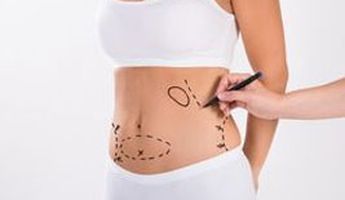
Find the best clinics for Liposuction in Tokyo
No clinics available
Ukraine offers the best prices Worldwide
Price: $ 120
Compare Before & After Photos of _procedure_photos.phpLiposuction
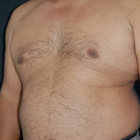
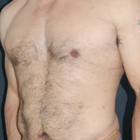
Front view
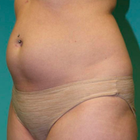
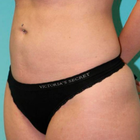
Half-side view
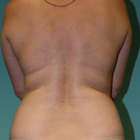
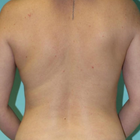
Full-side view
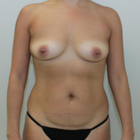

Front view
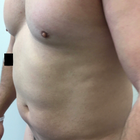
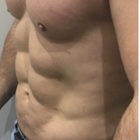
Half-side view
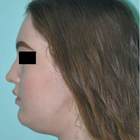
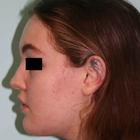
Full-side view
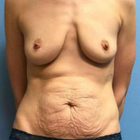
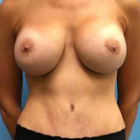
Front view
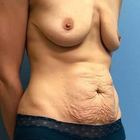
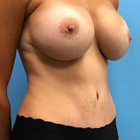
Half-side view


Full-side view
WHY US?
At Medijump, we're making medical easy. You can search, compare, discuss, and book your medical all in one place. We open the door to the best medical providers worldwide, saving you time and energy along the way, and it's all for FREE, no hidden fees, and no price markups guaranteed. So what are you waiting for?

Free

Best Price

Widest Selection

Risk-Free
What you need to know about Liposuction in Tokyo?
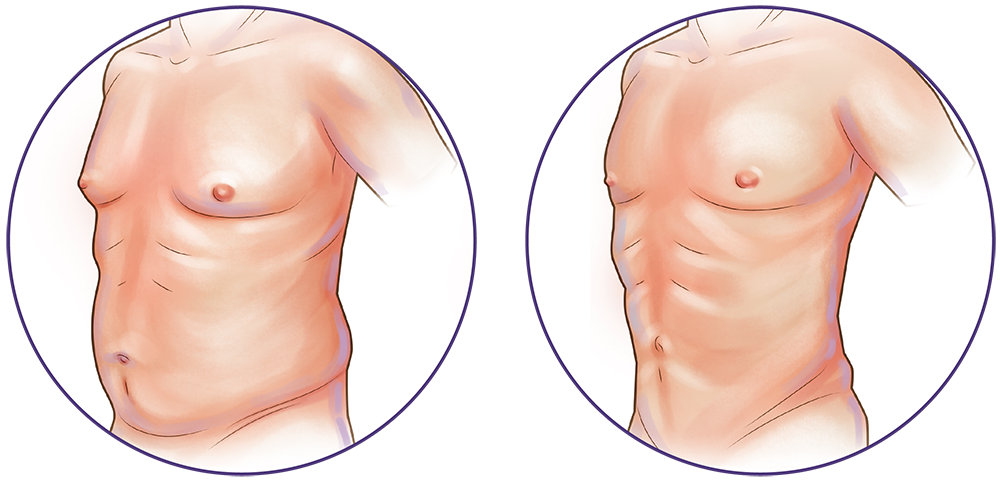
Liposuction is a cosmetic surgery that “sucks” out fat from areas that are hard to lose through a healthy diet and exercise, while liposculpture is the shaping of the skin back to its desired shape. Both are done in conjunction with one another at the same time. Most areas can be treated. Traditionally the most popular areas to treat are the stomach/abdomen, chin and neck, love handles, arms, and inner and outer thighs. Becoming more popular are the knees, calves and ankles, all with very successful results.
While liposuction can permanently remove fat cells and alter your body shape, it should not be viewed as a quick fix for individuals who are significantly overweight. The procedure works best for those who have already lost some weight themselves and are close to their ideal weight but need help tackling stubborn areas of fat in problem areas.
What is the cost of Liposuction in Tokyo?
When you're thinking about liposuction in Tokyo, one of the first things you probably wonder about is the cost. Here's the thing: the price isn't the same for everyone. It hinges on a few details like how many parts of your body you’re getting treated, how complex the treatment is, and the professional fee of your doctor. Costs for anaesthesia and the use of the surgical facility are also added to the bill. It's vital to remember, too, that because liposuction is often carried out for aesthetic reasons, normal health insurance might not cover it.
Can Liposuction be used as a weight-loss method?
Unwanted fats are very hard to get rid of especially if you are not a fan of exercise or diet. Liposuction, also known as Lipoplasty, liposculpture suction, lipectomy or simply lipo, basically eliminates unwanted fats by suctioning it away. Despite the growing trend of non-invasive fat reduction treatments, liposuction is still the leading procedure to remove stubborn fat cells.
Liposuction permanently removes fat cells and enhances the shape of your body. A plastic or dermatologic surgeon usually performs this type of procedure on the patient’s belly, hips, thighs, buttocks, arms, back or face to improve their shape. Furthermore, liposuction can be done together with other plastic surgeries such as facelifts, breast reductions, and tummy tucks.
This treatment procedure is particularly used for aesthetics, mainly to improve a person’s appearance. In most cases, maintaining and achieving such positive results will depend on your lifestyle.
What does a Liposuction Procedure Involve?
Before you have the treatment, a series of tests are required to ensure if you are fit for the surgery. You will also need to sign a consent form to confirm that you are fully aware of the risks, benefits and possible alternatives to the procedure.
You will likely be put under using general anesthesia, which can last for 1 to 4 hours. An epidural can also be used for procedures on the lower part of the body, although this is becoming increasingly unpopular now. Alternatively, you may be given local anesthesia if the procedure will be on small areas of your body. You may be asked to stand up during the procedure to ensure proper fat removal, but you will not feel any pain.
Tiny incisions will be made in the areas of interest through which a cannula can fit. This thin tube-like device is connected to a vacuum, capable of suctioning the fat from within your body. There are a few common techniques used, including Laser-Assisted or SmartLipo, UAL (Ultrasound-Assisted Lipo) or the most popular technique, Tumescent Lipo - this involves the pre-injection of a saline solution to help separate the fat from the blood, so less blood is removed. You'll discuss the best option with your surgeon before confirming what type of Liposuction is best for you.
How Long Should I Stay in Tokyo for a Liposuction Procedure?
Generally, patients who have received general anesthesia will be required to spend the night in the hospital (in-patient). Patients, who have had local anesthesia, may be able to leave the hospital on the same day.
After the operation, you will have to wear support bandages (support corset, bandages or elasticated support) whilst healing. Expect some pain, swelling and bruising during the following days and weeks. Your surgeon will prescribe medication to help control your pain and antibiotics to reduce the risk of infection. Furthermore, your stitches may be removed during your follow-up appointment with your surgeon. You should expect to stay in Tokyo for about a week post-op to allow for the initial recovery and check-up appointments, which will include the removal of stitches.
What's the Recovery Time for Liposuction Procedures?
Numbness in the specific area of your body where the fat was removed is to be expected for the first couple of weeks, usually, this will improve after 6 to 8 weeks. You may also need to wait a few days before going back to work. As for your normal activities, especially exercise, you may have to wait a few weeks before resuming.
Overall, the recovery time may vary from patient to patient. In most cases, patients can return to light activities within 2 to 3 days and are also able to go back to work after two weeks. As for the results, you may see visible results after 3 to 4 weeks, however, it can take several months before you see the final outcome.
What sort of Aftercare is Required for Liposuction Procedures in Tokyo?
Just like any other cosmetic surgery, following your surgeon’s aftercare instructions is vital in achieving and maintaining the best results. If the procedure was done above your waistline, you may be advised to sleep propped on pillows to have elevation on the specific area. This helps drain the fluids and prevent them from pooling. Furthermore, applying cold compress on a certain area where the procedure was performed is highly recommended, this will reduce inflammation and bruising especially during the first few days.
What's the Success Rate of Liposuction Procedures in Tokyo?
Liposuction remains one of the most popular cosmetic surgeries with a success rate of 85%, offering patients the enhanced body shape they've been craving. However, just like any other surgeries, it also comes with possible risks. Complications vary and are dependent on the procedure is as well as your surgeon’s skills. Possible risks and complications include:
- Severe bruising
- Inflammation
- Blood clot forms in veins, causing inflammation and complications (Thrombophlebitis)
- Kidney or Heart problems - changes in the body's fluid levels during the procedure may cause kidney or heart problems.
- Pulmonary embolism - when fat gets into your blood vessels and travels to your lungs, eventually, blocking your lungs.
Are there Alternatives to Liposuction Procedures in Tokyo?
CoolSculpting – is a fat freezing liposuction alternative. This is more suited to people who are close to their target weight but still have unwanted pockets of fat. Coolsculpting is a fat-freezing procedure that crystalizes your fat cells until they break apart painlessly.
Ultrashape - a non-invasive procedure that doesn’t require the need for anesthesia. This treatment procedure will make use of a body sculpting device that vaporizes fat cells within the targeted area with waves of ultrasound energy. Fat cells are permanently flushed out of your body, giving you a more natural-looking fat loss.
How does Liposuction differ from CoolSculpting and Vaser liposuction in terms of technique?
Liposuction vs Vaser Liposuction
Like traditional liposuction, the purpose of Vaser liposuction is to change the contours and shape of the body by removing persistent fat deposits. The word Vaser is actually an acronym for Vibration Amplification of Sound Energy at Resonance. This specialized ultrasound technology breaks down the fatty tissues using ultrasonic frequency waves, which is why it's often referred to as Ultrasonic Liposuction or Ultrasound Liposuction.
Liposuction vs CoolSculpting
CoolSculpting is the new non-invasive, freezing method used to also change the body contours and shape, however, this method does not require the use of a cannula so there is no damage to the overlying skin. Instead, it involves the controlled application of cooling localized fat deposits, which are then expelled from the body through the kidneys.
How safe is Liposuction in Tokyo?
Liposuction, when performed in Tokyo by a qualified and experienced plastic surgeon, is generally considered safe. The procedure has evolved significantly since its introduction, with advancements in technology and techniques contributing to its safety profile. Most liposuction procedures are performed without major complications, and patient satisfaction rates are high. However, as with any surgery, there is always an inherent risk.
It's crucial to have a detailed discussion with your surgeon regarding the safety of the procedure. The surgeon should be open about potential risks and complications, and explain how they would handle them should they arise. Factors such as your overall health, medical history and the area or the amount of fat being removed can influence the risks associated with liposuction.
What Should You Expect Before and After a Liposuction?
After your surgery, expect some swelling and discolouration in the areas where the fat was removed. To assist in healing and lessen swelling, you'll be given a snug garment to don. It is advisable to arrange for someone to take you home after the surgery and be with you for the initial day after the procedure. Though some changes will be noticeable soon after the surgery, the best results will take shape once the swelling has fully dissipated, which usually takes around 3-6 months. Regular check-ins with your surgeon are vital to ensure your recovery is progressing as expected.
As the wise saying goes, "Your waistline is your lifeline." Liposuction does remove fat cells for good, but weight gain post-procedure can cause the leftover fat cells to grow, potentially in different areas of your body. Therefore, a balanced diet and regular exercise are crucial for maintaining your new silhouette.
How Can I Prepare for Liposuction in Tokyo?
Prepping for a liposuction surgery in Tokyo? You've got this! Here are some absolutely essential steps you should follow for a smooth and successful procedure:
- Consultation: First things first. Have an in-depth consultation with your plastic surgeon. They'll assess your health status and discuss your goals. Taking this information into account, they'll provide some key instructions for you leading up to the surgery day.
- Healthy Lifestyle: In preparation for the procedure, it's of utmost importance to maintain a healthy lifestyle. Get in regular exercise. Eat balanced meals. Hydrate frequently. If you smoke, now is the time to quit. And hold off on alcohol. Your body will be on the fast track to healing, thanks to these healthy habits.
- Follow Instructions: Your surgeon will give you a set of preoperative instructions. Avoiding certain medications or supplements might be on the list. Stick to these guidelines religiously.
- Support Person: And lastly, on surgery day, make sure to have a trusted friend or relative by your side. Once the procedure is completed, you'll need a safe ride back home.
Whilst the information presented here has been accurately sourced and verified by a medical professional for its accuracy, it is still advised to consult with your doctor before pursuing a medical treatment at one of the listed medical providers
No Time?
Tell us what you're looking for and we'll reachout to the top clinics all at once
Enquire Now

Similar Procedures in Tokyo
Prices Start From $31

Prices Start From $120

Prices Start From $120

Prices Start From $120

Prices Start From $120

Prices Start From $31

Prices Start From $120

Popular Procedures in Tokyo
Prices Start From $111

Prices Start From $931

Prices Start From $76

Prices Start From $236

Recommended Medical Centers in Tokyo for procedures similar to Liposuction

- Interpreter services
- Translation service
- Religious facilities
- Medical records transfer
- Medical travel insurance
- Health insurance coordination
- TV in the room
- Safe in the room
- Phone in the room
- Private rooms for patients available

- Interpreter services
- Translation service
- Religious facilities
- Medical records transfer
- Medical travel insurance
- Health insurance coordination
- TV in the room
- Safe in the room
- Phone in the room
- Private rooms for patients available

- Interpreter services
- Translation service
- Religious facilities
- Medical records transfer
- Medical travel insurance
- Health insurance coordination
- TV in the room
- Safe in the room
- Phone in the room
- Private rooms for patients available

- Interpreter services
- Translation service
- Religious facilities
- Medical records transfer
- Medical travel insurance
- Health insurance coordination
- TV in the room
- Safe in the room
- Phone in the room
- Private rooms for patients available

- Interpreter services
- Translation service
- Religious facilities
- Medical records transfer
- Medical travel insurance
- Health insurance coordination
- TV in the room
- Safe in the room
- Phone in the room
- Private rooms for patients available
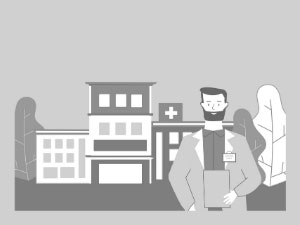
- Interpreter services
- Translation service
- Religious facilities
- Medical records transfer
- Medical travel insurance
- Health insurance coordination
- TV in the room
- Safe in the room
- Phone in the room
- Private rooms for patients available

- Interpreter services
- Translation service
- Religious facilities
- Medical records transfer
- Medical travel insurance
- Health insurance coordination
- TV in the room
- Safe in the room
- Phone in the room
- Private rooms for patients available

- Interpreter services
- Translation service
- Religious facilities
- Medical records transfer
- Medical travel insurance
- Health insurance coordination
- TV in the room
- Safe in the room
- Phone in the room
- Private rooms for patients available
Liposuction in and around Tokyo
About Tokyo
Tokyo is Japan’s capital. It is one of the 47 prefectures of the country. There are over 13.9 million people estimated to live there. The capital is a giant metropolis that offers tourists the chance to indulge in the traditional Japanese culture, eat in one of its delicious restaurants, or learn more about modern life. One of the most popular sights in Tokyo is the cherry blossoms that fill the streets and parks with pink petals in Spring. The soft pink petals are an icon of the country.
Among the 30 million people who traveled to Japan in 2018 are medical tourists. With a vast range of high-quality medical services and facilities, Tokyo has a large contribution to the country’s growing medical tourism. it has numerous public and private hospitals that offer outstanding healthcare. These hospitals are equipped with cutting-edge medical technology and highly qualified doctors. Many doctors and medical professionals speak fluent English.
As Japan was ranked the highest in five-year survival rates of lung cancer and esophagus cancer patients from 2010 to 2014, the most sought-after medical procedure is Tokyo oncology treatments. There are many medical facilities in the area that are JCI-accredited and offers a wide range of treatments including Breast Augmentation procedures.
Popular Areas in Tokyo
Tokyo is sprawling with many extraordinary attractions and sights. It is the perfect mixture of traditional and modern. From temples, shrines, futuristic infrastructure, robot restaurants, booming nightlife, nature to anime, all coexist peacefully here.
To see a beautiful city view, climb up the Tokyo Skytree, Tokyo Metropolitan Government Building, and Tokyo Tower. Visit Tokyo’s oldest temple, Sensoji Temple in Asakusa, and learn more about the history and traditions. The temple is surrounded by numbers of Japanese restaurants that serve authentic dishes including Sushi, Tempura, and Sukiyaki. Tourists can also try a variety of traditional activities like wearing a Kimono dress.
Not far from Asakusa is Ueno, where one of the biggest parks in Tokyo is located. Ueno Park is the perfect place to spend a beautiful day. The park consists of a zoo, museums, historical monument, and green spaces. To try out Tokyo’s futuristic and modern side, come to the first digital art museum in the world, MORI Building DIGITAL ART MUSEUM — teamLab Borderless. Experience a unique interactive art with the latest technology and immerse in multiple digital art exhibitions.
Shopping is also one of the main attractions in Tokyo. Tourists most favorite places to shop are Ginza, Nakamise Shopping Street, as well as Takeshita Street and Omotesando in Harajuku. For anime or Disney fans, attractions such as Ghibli Museum, Fujiko F Fujio Museum, Pokemon Center, Tokyo One Piece Tower, Nakano Broadway, Akihabara, Tokyo Disneyland, and Tokyo Disney Sea are some of the best places to visit.
Weather and Climate in Tokyo
Tokyo is a year-round destination because it has temperate weather with four distinct seasons.
- Summer is hot and humid with an average temperature of 21 to 32 °C. Sometimes it can get as high as 40 °C. this season starts in June and ends in August. June sees a lot of rainfall while August is the start of typhoon season.
- Autumn lasts from September to November. The typhoon season peaks in November. The weather during this season is mild with less humidity. It is pleasantly warm in October, making it one of the best times to travel in Tokyo.
- Winter comes in December and lasts until February. The weather is dry and sunny with an average temperature of around 2 °C to 12 °C. The temperature rarely drops below 0 °C. There is very little snow in Tokyo.
- Spring starts in March to May. The temperature increases gradually during this season, with an average of 13 °C in the afternoon and 5 °C in the morning and evening. The sky is mostly clear during this season and it is also one of the best times to visit Japan because of the cherry blossoms.
Getting Around in Tokyo
Located around 60km east of central Tokyo, Narita International Airport is the main international gateway to Tokyo. The airport serves both domestic and international flights to almost every major city in the world. Budget airlines such as Jetstar Japan, Peach, and Eastar Jet operates flights from this airport.
Rail, bus, taxi, or car rental are available for tourists to reach the city center from Narita Airport. There are several train types to choose from. The Main Line (regular commuter train) in Keisei Line is the most affordable one, it costs around ¥1,190 to ¥1,230 ($10 to $11.3) and it connects with the Toei Asakusa Subway Line and the Yamanote Line. For faster travel, choose the Skyliner train that takes only 36 minutes to Nippori. This train costs around ¥2,470 ($22.7). There is another train known as the Sky Access Express train that offers better access to Tokyo. A trip to Asakusa takes about 58 minutes and costs around ¥1,290 ($11.9).
A taxi might not be the best option since it’s very expensive, it usually costs over ¥20,000 ($184) from Narita Airport to Tokyo. The more affordable option is the shared minibus which cost ¥6,180 ($57) per person. Buses are comfortable, the Limousine Bus costs around ¥2,880 ($26.5) and the Tokyo Shuttle costs around ¥900 ($8) to ¥1,000 ($9).
Tokyo is served by one of the best public transport systems in the world. Trains and subways are the best way to get around the city. It is the cheapest and fastest mode of transportation. Taxis are easily available and can be hailed on the street except in areas like Ginza, where taxis are only allowed to stop in taxi stands. The base fare is ¥430 ($4) for the first 1.5 km and ¥80 ($0.7) for every 237 meters.
Tourist Visas in Tokyo
Japan allows citizens of 68 countries and territories to stay in the country for up to 90 days. Citizens of Indonesia, Brunei, and Thailand are granted a 15-day visa-free trip. The country has a visa for a medical stay that grants long-term stays to medical tourists and approval for visa holders to travel back and forth between their home countries and Japan. Foreign visitors who visit Japan on tourist visas can also receive medical services, except for long-term therapies and surgeries that require more than three months.
Additional Information
- Local Currency: The official currency is the Japanese Yen (¥). There is around ¥111 per $1.
- Money & Payments: ATMs are widely available and can be found in post offices or convenient stores (especially 7-Eleven). Credit cards are accepted in some hotels, restaurants, and shops but it is advisable to always bring cash. Tipping is optional.
- Local Language: Japanese is the official language. Most people speak limited English but many restaurant menus and signs are written in both Japanese and English.
- Local Culture and Religion: The main religion is Shintoism and Buddhism. There is a small group of Christians in the city.
- Public Holidays: There are sixteen major public holidays in Japan. The city hosts annual festivals including Fuji Matsuri, Hinode Matsuri, and Tenno Matsuri.
Popular Searches
- Plastic Surgery in Thailand
- Dental Implants in Thailand
- Hair Transplant in Thailand
- Breast Augmentation Thailand
- Gastric Sleeve in Thailand
- Gender Reassignment Surgery in Thailand
- Laser Hair Removal in Bangkok
- Botox in Bangkok
- Dermatology in Bangkok
- Breast Augmentation in Bangkok
- Coolsculpting in Bangkok
- Veneers in Turkey
- Hair Transplant in Turkey
- Rhinoplasty in Turkey
- Stem Cell Therapy in Mexico
- Rhinoplasty in Mexico
- Liposuction in Mexico
- Coolsculpting in Tijuana
- Rhinoplasty in Korea
- Scar Removal in Korea
- Gastric Sleeve in Turkey
- Bone Marrow Transplant in India
- Invisalign in Malaysia
- Plastic Surgery in the Dominican Republic
- Tummy Tuck in the Dominican Republic
- Plastic and Cosmetic Surgery in Poland
- Rhinoplasty in Poland
- Hair Implant in Poland
- Dental Implants in Poland
- IVF in Turkey
